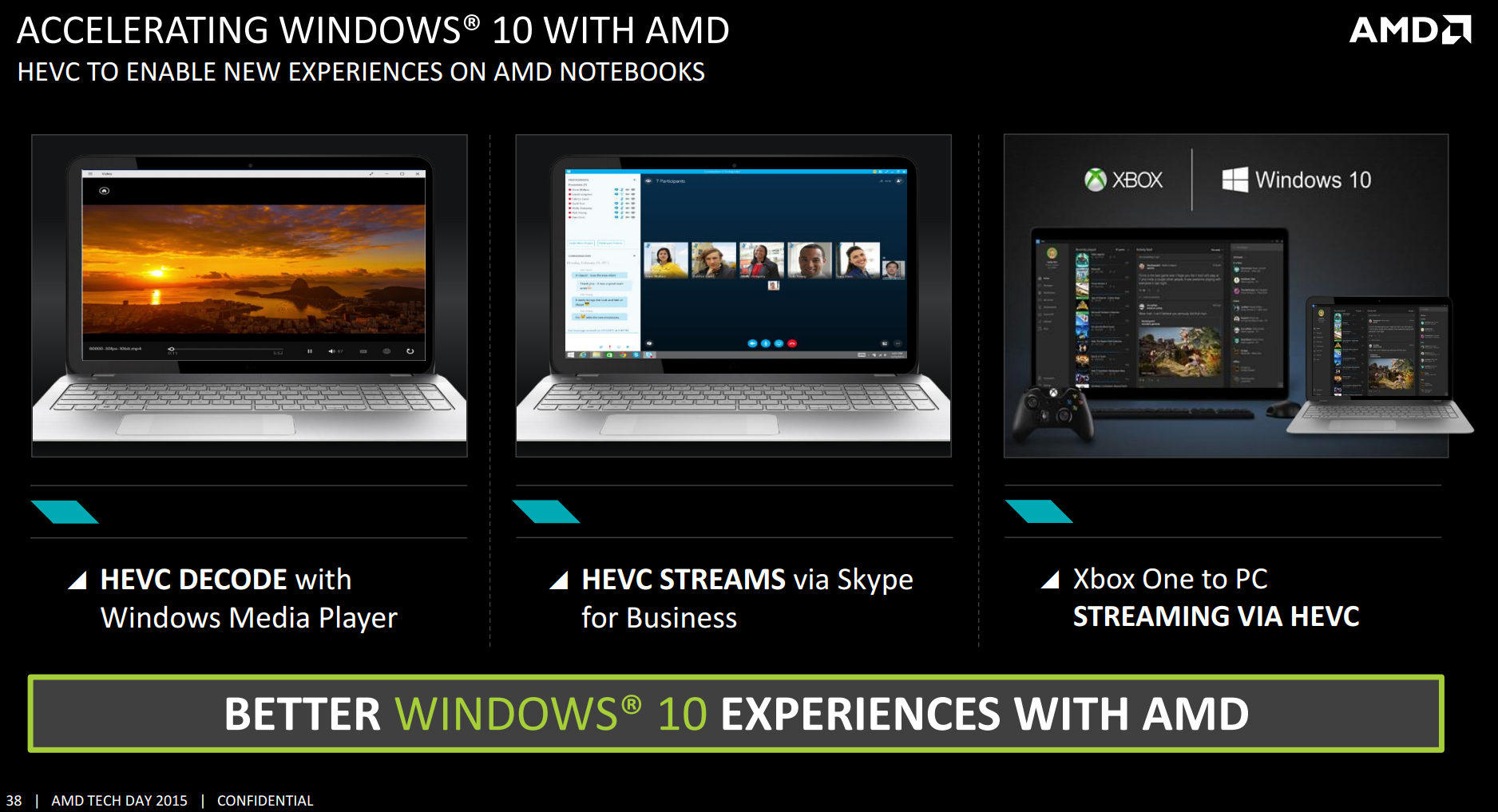So you are denying in print from June 2015 slides from AMD that the XB1 has a HEVC encoder for game streaming because it is too soon to use it and Microsoft is not using it. I'm surprised you didn't claim the AMD slide is about the XB1 "S" coming 14 months later. What does Carrizo use for game streaming? AVC, so it must not have HEVC support either. Proof that AMD lied about Carrizo so they must be wrong about the XB1.
Here's a wacky idea: why don't you stop pinning all your hopes and dreams on a few words from a marketing slide?
You invented a grand story from those EU documents based on the two words "UHD Capable". You've invented another grand story -- at odds with both common sense and absolutely every other shred of evidence -- based on "Streaming via HEVC" from an AMD marketing slide.
We've already had a very prominent person from Microsoft from the video/graphics team specifically involved in its HEVC implementation -- someone absolutely, undeniably in a position to know -- say that there is no in-hardware HEVC decoding in the launch Xbox One. I do put far more weight on that than an undescriptive AMD marketing slide that certainly doesn't seem to mean what you think it means.
Maybe next time you could hold out for an
entire sentence before weaving a convoluted scenario and a sinister conspiracy around it? Y'know, baby steps.
I hope you are not expecting the XB1 "S" to support HEVC to Twitch or HEVC game recording this August when it launches. Will you say this proves the XB1 "S" doesn't support HEVC?
We have numerous sources talking about the UHD capability of the S -- physical media and streaming. UHD BD requires a dedicated HEVC decoder, the S supports UHD BD, so obviously the S supports HEVC. Game streaming is of zero consequence for this conversation.
It's far more likely that the marketing slide is referring to the S than it is the launch console. The fact that we have to wonder what the slide is referring to (similar to your incredibly vague EU documents) proves that it's not a strong foundation for any claim one way or the other. What makes more sense?
(a) This AMD slide references HEVC streaming from the Xbox One to the PC.
(b) It doesn't say that it's
not the launch Xbox One, so that
must be what it's talking about!
(c) The visionaries at Microsoft put a dedicated hardware HEVC encoder/decoder in place years before it would be relevant; hell, it's not even being used now, right at three years later!
(d) There's no documentation to support this, though: how else can MS maintain such a closely guarded secret?!
(e) Not even the HEVC team at Microsoft can know of its existence, so they had to write a CPU-bound software implementation for an HEVC decoder instead.
(f) Since the launch Xbox One can(not) provably stream 1080p gameplay via HEVC to a PC, and since encoding requires more resources than decoding, therefore the launch Xbox One can playback Ultra HD video!
- or -
(a) There's no documentation for hardware-based HEVC decoding/encoding in the launch Xbox One because that capability does not exist.
(b) Stacey Spears said there's no dedicated HEVC decoder in the launch Xbox One because he knows what he's talking about.
(c) The MS team developed a CPU-bound HEVC decoder because there was no dedicated hardware that they could use instead.








